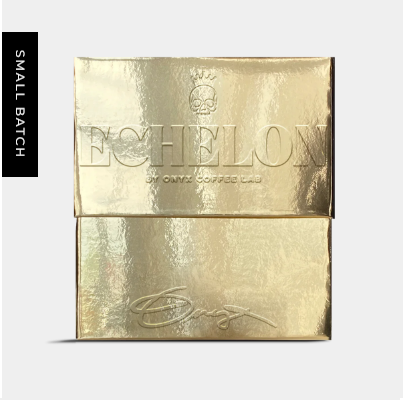
About this Coffee
This silky and refined Gesha gets its citric profile in two ways: the primary fermentation of 140 hours, with a subsequent extended drying phase with the inclusion of citrus peel. This extended fermentation and fruit-infusion usually yields a winey and overpowering profile, yet this Gesha from Wilder Lasso proves otherwise with all the delicate notes of a washed coffee.
This unique coffee came to us by way of Forest Coffee, in Colombia. This sought-after coffee is striking on the cupping table, and has sold quickly season-after-season. This harvest was portioned off for us, as Shady separated out a large micro-lot of this special process for us.
Produced by Wilder Lasso in Huila, Colombia, this anaerobic washed Gesha is fermented in sealed tanks for 150 hours before drying. This long fermentation would usually result in a heavily fruited cup, but with this Gesha, the long fermentation creates an intense floral and tactile experience. During the drying phase, native lemon peels are added to the drying beds, imparting a gentle citric aroma to the coffee, which is persistent in the cup. This process is sort of a in-between of co-fermentation and expression, reminiscent more of a tea with citrus added then a fully co-fermented coffee.
Co-Fermentation:
“Infused. Co-fermented. Innovation. Heresy.” These words are often used to describe the process of co-fermentation. This is not a new practice (producers in some regions have been adding Cinnamon to fermentation tanks for years.) However, this new trend of applying different additives to fermentation or drying has taken off in the past few years. This polarizing practice involves adding anything from essential oils to fruit to spices to green coffee in order to create a dominant flavor profile that carries to the brewed cup. The cases have been argued whether the market drives these or the production of them creates demand; either way, this is one side of coffee production and processing that is being explored. As a roaster, the cornerstone of this processing method is transparency and a do-no-harm approach with infusions, ensuring the end consumer is aware of the alteration of the green coffee structure and, therefore, the brewed coffee.
The actual processing applied to this coffee is straightforward: there is an initial pre-fermentation of the cherry, followed by a depulp and a five-day anaerobic fermentation which includes macerated grapes. The fruit esters penetrate the permeable structure of the green coffee, providing a lasting and pungent flavor through the drying process, roasting, and brewing. This process has caused quite a stir within certain circles of the specialty community. Still, it’s always been essential for us to share the many facets of coffee, especially when they’re as delicious as this offering.
WASHED PROCESSED COFFEES
Processing in coffee refers to the conversion of the raw coffee cherry into green coffee, a finished product for roasters to manipulate. Washed coffee can also be known as “wet-processed.” It refers to the removal of the fruit that covers the beans (seeds) before they are laid to dry. To do this, coffee cherries are then squeezed through a screen called a pulper. The fruit/skin travels down one shoot, while the coffee beans go into a large tank. The seeds at this point still are covered in a sticky, mucilage-like substance, think the stringy fruit left on a peach pit. From here, the coffee goes through a 24-hour fermentation. This step is a delicate time in processing where bacteria are eating and converting the mucilage and changing the flavor of the coffee. If this fermentation happens for too long and the coffee becomes vinegary, too little, and you end up drying coffee with mucilage semi-intact. The coffee is washed several times to remove any remaining mucilage that is left.